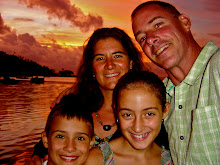Explorers are an amazing lot. They go to unknown lands unknown waters and hit uncharted reefs. They leave families and friends, sometimes never seeing them again. The amazing thing about Abel Tasman is that he sailed 13,000 km through the treacherous South Seas in search of a fabled continent. He had two ships to guide and one hundred and ten men on them. He was the first European to find two major new landmasses and two new archipelagoes in the South Pacific. He returned safely to civilization having lost only four men. And yet, his employer considered Abel Tasman’s journey a failure.
Abel Janzoon Tasman was born in 1603 in Lyutegast, Netherlands "in humble circumstances." Not much else is known about his early life in Holland, but in 1633, Tasman joined an expedition to India as a common sailor. He apparently was good at his new job because a short eight years later, Tasman was placed in charge of an expedition to northern Japan to explore trade routes.
Tasman’s major exploration was in 1642, when at the age of 39, he lead the ships Zeehaen and Heemskerck and a crew of 110 men on an ambitious journey into the Southern Ocean. Tasman set off from the port of Batavia (present day Jarkarta) with specific instructions from his employer, the Dutch East India Company. The expedition was to sail south and search for the fabled Great South Land, a continent that Europeans thought existed but that no European had yet found. Tasman was to map any new lands he found and, if possible, claim them for the Dutch. He was also to gather any information for the company to use to establish new trade routes in the region.
It is important to remember that ships of that era could only sail with the wind at their backs. As a result, Tasman’s expedition first sailed to Mauritius to take advantage of the winds that would propel the Zeehaen and Heemskerck in the right direction. After resupplying the ships with provisions for a year, the team headed south as instructed toward 52 degrees latitude, again to catch favorable winds. The expedition was then to head east in search of the new continent.
The going was tough, and Tasman and his crew had to change course, steering the ships northward so as to get away from the cold and terrible storms that lashed the ships all day and all night. This put them on course to hit a new major landmass, which Tasman claimed for Holland and named Van Diemen’s Landt after the governor of the Dutch East India Company. This land is now known as Tasmania.
The Tasman Sea near Haast, NZ (photo by Ben)
When “Land Ho!” was called again, Tasman thought he had discovered the Great South Land. He called it Staaten Landt. Actually, he had “discovered” present day New Zealand. The expedition tried to make landfall a number of times so that they could claim the land for the Dutch. Challenging seas and a violent skirmish with the native Maoris at what is now Golden Bay blocked them from doing so however.
Unable to land or resupply, Tasman and his crew left New Zealand with only a few maps and drawings of the new land. They did not even manage to discover that New Zealand was made up of two major landmasses, the North Island and the South Island.
The expedition had better luck in Tonga, where they were able to get water and fruit and had much better relations with the natives. They continued north and found Fiji. Dangerous reefs and stormy conditions made it impossible to land though, so the expedition continued on back towards Batavia.
Map of Abel Tasman's Journey 1642-43 - Source: Internet
After 10 months, the ships returned to Batavia with almost all their men, lots of new information and having discovered 4 new pieces of unknown land. Even so, the Dutch East India Company called Abel Tasman’s voyage of discovery a failure. In his instructions, he was supposed to circle around any piece of land they found. He did not do this. He also did not find any new trading routes, the company said, even though he did trade with the Tongans. Finally, the company had instructed wanted Tasman to seek a new sailing route between New Holland (Australia) and Papua New Guinea. Tasman chose instead to sail a known route home.
Despite his employer's grumblings, Tasman led other voyages of discovery a few years later, one to map the northern coast of New Holland and another to the Philippines, an island chain that the Dutch were trying to take away from the Spanish. Tasman got into trouble for mistreating one of his sailors on the Philippines trip and was disciplined. He was later reinstated and eventually retired to his estate in Batavia. He managed his various businesses until his death in 1659 at the age of 56.
Abel Tasman Glacier, New Zealand (Photo by Ian)
Perhaps the Dutch East India Company was wrong about Tasman? After all, he and his crew accomplished an amazing voyage under harsh conditions with primitive equipment. He discovered four new pieces of land and recorded information that many future explorers, including Captain James Cook, used during on their own explorations. Because of these discoveries, Abel Tasman has lots of things named after him in this part of the world, like Tasmania, the Tasman Sea and Abel Tasman National Park in New Zealand. Maybe it is the Dutch East India Company that is at fault for misjudging their loyal captain's accomplishments? What do you think?





best biography i have ever read
ReplyDelete